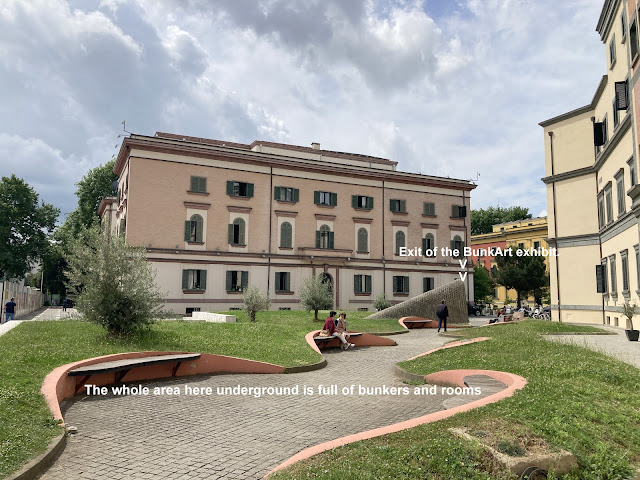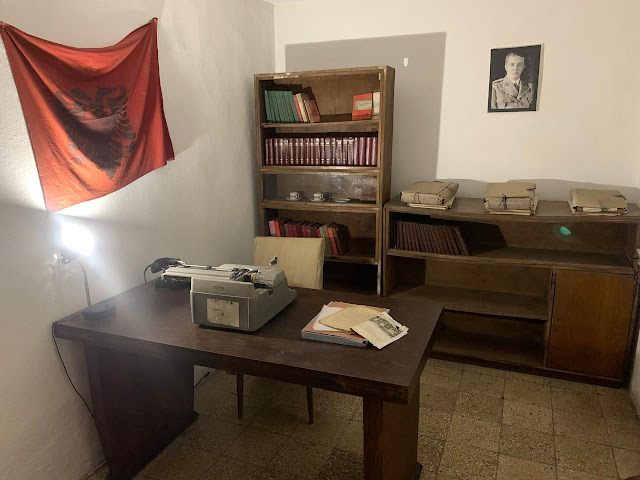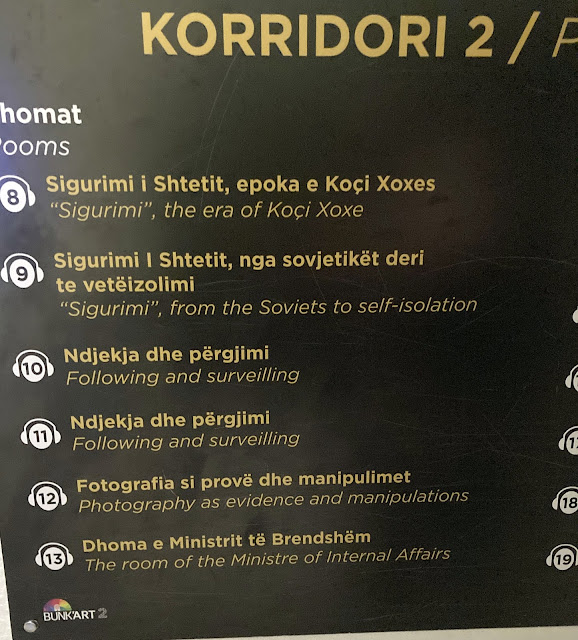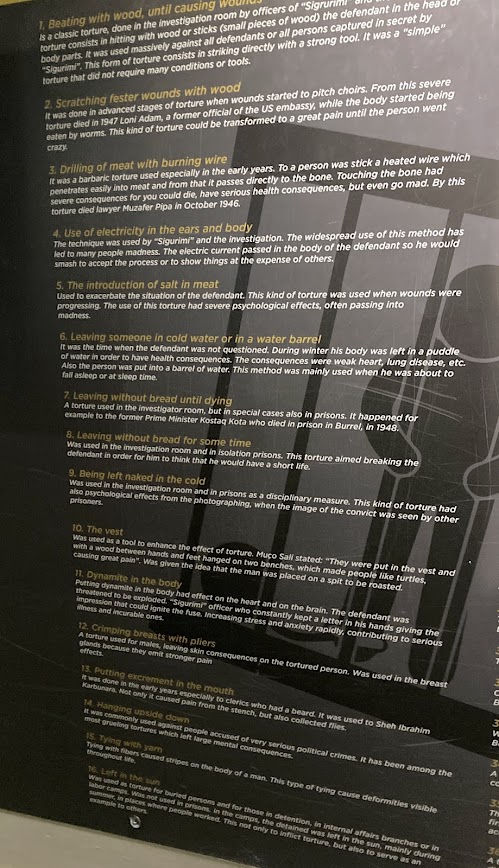“The local name for Albania in the Albanian language is Shqipëria. The name "Shqipëria" is believed to be derived from the Albanian word "shqipoj," meaning "to speak/to spell," or from the eagle, which is "shqiponjë" in Albanian. It is on the national flag. Bordering countries are Greece, Macedonia, Serbia and Montenegro.
The official language of Albania is Shqip or Shqipe (Albanian). It's an Indo-European language and the only surviving member of its branch, often referred to as the Albanoid branch. While Albanian is the dominant language, with 98.76% of the population claiming it as their native language, several other languages are spoken by minority groups and through foreign language education.
The establishment of the People's
Republic of Albania in 1944 under the leadership of Enver Hoxha (pronounced Hodja) was a significant
epoch in modern Albanian history. Hoxha's regime embraced Marxist–Leninist ideologies and
implemented authoritarian policies,
including prohibition of religious practices, severe restrictions on travel,
and abolition of private property rights. It was also defined by a
persistent pattern of purges, extensive repression, instances of betrayal, and
hostility to external influences. Any form of opposition or resistance to
his rule was met with expeditious and severe consequences, such as internal
exile, extended imprisonment, and execution. The regime confronted a
multitude of challenges, including widespread poverty, illiteracy, health
crises and gender inequality. In response, Hoxha initiated a modernisation
initiative aimed at attaining economic and social liberation and transforming
Albania into an industrial society. The regime placed a high priority on the
diversification of the economy through Soviet-style industrialisation,
comprehensive infrastructure development such as the introduction of a
transformative railway system, expansion
of education and healthcare services, elimination of adult illiteracy, and
targeted advancements in areas such as women's rights.
Bunkers in Albania were constructed to prevent potential external invasions. By 1983, approximately 173,371 bunkers were scattered throughout its territory.
Albania's diplomatic history under Hoxha was characterised by notable conflicts. Initially aligned with Yugoslavia as a satellite state, the relationship deteriorated as Yugoslavia aimed to incorporate Albania within its territory. Subsequently, Albania established relations with the Soviet Union and engaged trade agreements with other Eastern European countries, but experienced disagreements over Soviet policies, leading to strained ties with Moscow and diplomatic separation in 1961. Simultaneously, tensions with the West heightened due to Albania's refusal to hold free elections and allegations of Western support for anti-communist uprisings. Albania's enduring partnership was with China; it sided with Beijing during the Sino-Soviet conflict, resulting in severed ties with the Soviet Union and withdrawal from the Warsaw Pact in response to the invasion of Czechoslovakia in 1968. But their relations stagnated in 1970, prompting both to reassess their commitment, and Albania actively reduced its dependence on China.
Under Hoxha's regime, Albania underwent a
widespread campaign targeting religious clergy of various faiths, resulting in
public persecution and executions, particularly targeting Muslims, Roman
Catholics and Eastern Orthodox adherents. In 1946, religious estates underwent
nationalisation, coinciding with the closure or transformation of religious
institutions into various other purposes. This culminated in 1976, when Albania
became the world's first constitutionally atheist state. Under this
regime, citizens were forced to renounce their religious beliefs, adopt a
secular way of life, and embrace socialist ideology”.
The above text is from
Wikipedia – the best
concise way to detail the past and explain Bunk
Art 2.
In 1992, the Communist party suffered a defeat and
the subsequent years, there was major upheaval politically, economically and
socially; leading to a civil war in 1997. It aimed towards western countries and
from 2009, after NATO membership, the country prospered.
The House of Leaves had
the following sections to explain its working.
- Prologue
- Bugs and other creatures
- Library microphones
- he enemy
- External enemy
- Intermexo
- Everyday life
- Cries of the past
- Panopticon – Panakushtik
- Imperfect past
Each room exhibited in great detail the various instruments of surveillance with excellent captions. There were so many types – listening devices in walls, on equipment, in walls, tools etc. There was a whole section detailing the intricate hierarchical structure – the irony was that most of the department heads were executed for treason as Hoxha was paranoid.
This unique exhibition is located in the former
anti atomic shelter of the Ministry of Interior. Built between 1981 and 1986,
the bunker chronicles the history of the Albanian Ministry of the Interior from
1912 to 1991. It houses the first major video museum dedicated to the victims
of communist terror.


In Hoxha’s time, as exhibited in the House of Leaves or House of State Surveillance, everybody spied on everybody else. 520,000 relatives were executed. 350,000 were deported. State Security Service was known as SIGURIMI. Their agents were residents, informants, hosts and agents totalled: 1949 = 11,033. In 1990, the totalled 15,000. The max was in 1965 = 16,178.
The House of Leaves was an innocuous building. Begun as an Obstetrics clinic by a Dr Bansho, State Security took it over in 1943. In 1947, there were 18 prisons in Albania. 8 were for political prisoners. 7 for ordinary criminals and 3 were for mixed inmates.

In my mind, this was an excellent public display by
the authorities that such a regime should never again rule the country. It was a
revelation to me as most politicians would try and hide the past. I came away feeling really sad at the tyranny and
oppression that the local innocent populace had to suffer for nearly five
decades.






































No comments:
Post a Comment
Text and photographs are copyright of the author. No part of any article or photographs maybe transmitted or reproduced by any means, electronic, mechanical, photocopying or otherwise, without written permission. Do contact the author on email -- helpthesun@gmail.com